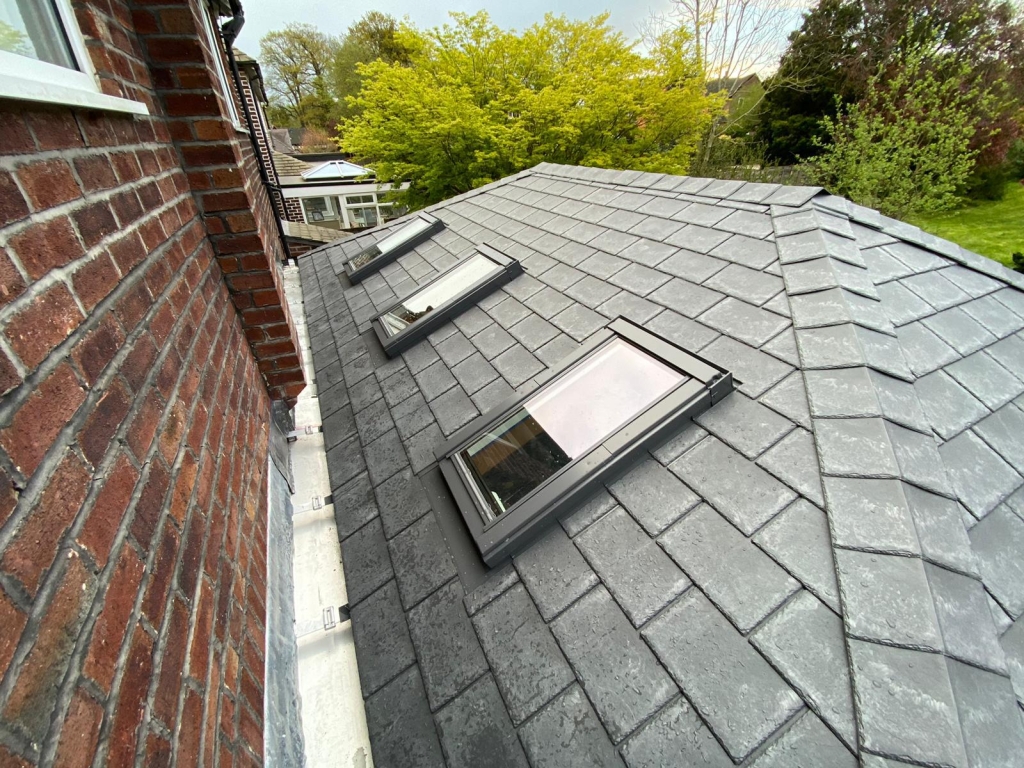Roof Replacement Cost For Terraced House: A Complete Information
Roof Replacement Cost For Terraced House: A Complete Information
Blog Article
Roof replacement is a significant undertaking for any homeowner in the UK. With the country's ever-changing weather conditions, ensuring that your roof is in good condition is not only a matter of aesthetics but also of safety and functionality. Over time, roofs naturally wear down due to exposure to wind, rain, snow, and even heat. A full roof replacement is the only solution when repairs no longer work. It is important to approach this process with careful planning and an understanding of what it involves. Roof replacement is a complex process that requires strategic planning and knowledge. Taking proactive steps now can help avoid larger, more expensive issues later.
One of the first signs that a roof replacement may be necessary is visible damage such as missing tiles, sagging sections, or leaks that continue despite multiple repairs. Many homes in the UK have slate and tile roofs. While these materials are very durable, over time they can wear out. Damp patches on ceilings, mould growth, and an increase in energy bills can also indicate that the roof is no longer providing adequate insulation or protection. Older roofs-those over 20 to 25 years-are more likely to need replacement. It's advisable to have a professional roofer conduct an inspection to assess the full extent of any damage. They can provide a detailed report and help you decide whether a partial repair or a complete replacement is necessary. Regular maintenance can extend a roof's lifespan, but eventually, every roof reaches the end of its functional life.
Choosing the right materials for a roof replacement in the UK is crucial, as different options offer varying degrees of durability, insulation, and cost. Traditional slate is a popular choice for its classic appearance and long lifespan, but it can be expensive and heavy. Concrete and clay tiles are also common and can offer a good balance between cost and performance. For those seeking a more modern option, composite or synthetic materials are becoming increasingly popular. They are lighter and easier to install. And they come with long-term warranties. The style of your house and the local planning laws will influence what you choose, especially if it is a listed or conservation property. Consulting with a roofing expert can help ensure that your new roof is both functional and compliant with local guidelines.
The price of Typical roof replacement prices in the UK can vary widely, depending on many factors. These include the complexity and size of the roof as well as the chosen materials and region. On average, replacing the roof on a standard three-bedroom house can cost between 5,000 and 12,000. Due to their complexity, properties with steeper slopes, dormer or multiple chimneys may have higher labor costs. It's important to get multiple quotes and compare not just the price but also what is included in the service. Reputable roofers should provide a clear, written quotation, including removal of the old roof, supply and installation of new materials, scaffolding, and waste disposal. Additionally, warranties for both materials and workmanship should be discussed to protect your investment. Although the initial costs might seem expensive, new roofing will improve energy efficiency, and increase resale values, so it is a good long-term investment. To generate additional details please visit www.roofadvisor.co.uk/how-much-does-a-roof-replacement-cost-in-the-uk/
When planning to replace your roof, it is important that you choose the best roofing material. The material you select will affect not only the appearance of your home but also its energy efficiency and long-term durability. Slate and tiles are popular choices in the UK, known for their longevity and aesthetic appeal. These materials are particularly suited for traditional and period homes. Asphalt shingles and concrete tiles tend to be preferred for modern homes due to affordability and easy installation. Bitumen membranes or bitumen shingles may be required for flat roofs. The pros and cons of each material are different, so the best choice is based on your budget, the desired life expectancy, as well as the architectural style and design of the house. Consulting with a professional roofer can help you make an informed decision based on your home's unique needs.
When replacing a UK roof, it is important to ensure that all work adheres to local building codes. Depending on the type of property and the extent of the work, you may need to apply for planning permission or building regulations approval before starting the replacement process. In some cases, particularly in conservation areas or with listed buildings, stricter rules apply regarding the materials and methods used for roof replacements. Working with a roofing contractor who understands these rules and regulations is crucial. They can make sure that all requirements are met. Failure to comply with these regulations can lead to fines and the necessity to replace the roof using approved materials.